Morehead-Cain Class of 2024 Celebrates Outstanding Faculty at UNC–Chapel Hill
Morehead-Cain Class of 2024 Celebrates Outstanding Faculty at UNC–Chapel Hill

The Morehead-Cain Class of 2024 expressed gratitude and recognition to distinguished faculty and staff members at UNC–Chapel Hill during an event on January 26. This gathering, known as the 2024 Faculty Appreciation Luncheon, aimed to honor those who demonstrated excellence in teaching, mentorship, and a steadfast commitment to student success.
Graduating seniors took the opportunity to nominate individuals who played a pivotal role in their education, professional development, and personal growth at Carolina. A total of fifty-seven honorees, spanning across thirty-two University departments and entities, were acknowledged during the event.
During the celebration, scholars took the stage to share heartfelt words of appreciation for the positive impact that faculty and staff have had on their overall Carolina experience. Among the highlighted faculty was our very own Professor Karin Leiderman, celebrated by graduating scholar Ryan Jensen. A full description of the event can be found here. A sincere thank you to Karin for her outstanding commitment and contributions!
Professor Karin Leiderman Leads Students to Success at NCUWM
Professor Karin Leiderman Leads Students to Success at NCUWM
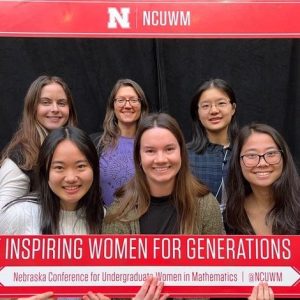
Professor Karin Leiderman recently led a group of five UNC undergraduates to the Nebraska Conference for Undergraduate Women in Mathematics (NCUWM). The students who accompanied her were Emily Huang, Sophie Liu, Chloe Shen, Alexandra Whiteside, and Madeline Vinal.
During the conference, three of these talented students had the opportunity to showcase their research:
- Emily Huang presented on “Fast Haar Transformation in Dependency Tests.”
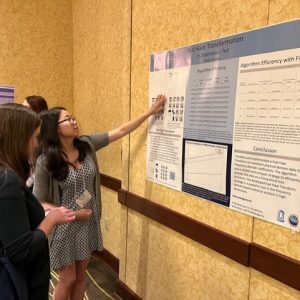
- Alexandra Whiteside delved into a “Mathematical Model of the Intrinsic Pathway of Blood Coagulation.”
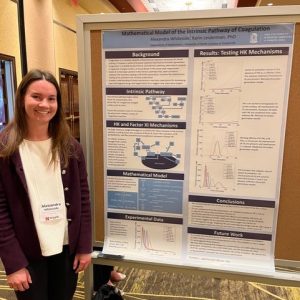
- Madeline Vinal explored a “Hitting Probability Metric for the Analysis of Gene Expression Data on Directed Graphs.”
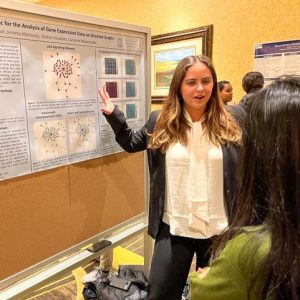
The University of Nebraska-Lincoln hosts the NCUWM annually and is supported by the National Science Foundation and the National Security Agency. This event aims to provide undergraduates with role models, insider knowledge, opportunities to present research, and a supportive community focused on issues related to women in mathematics.
Congratulations to all participants, and a special thank you to Professor Karin Leiderman for her leadership in making this endeavor a success!
UNC Celebrates Top Scholar-Athletes Mentored by Professors Boyce Griffith and Shahar Kovalsky
UNC Celebrates Top Scholar-Athletes Mentored by Professors Boyce Griffith and Shahar Kovalsky
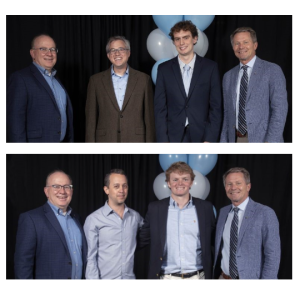
Professors Boyce Griffith and Shahar Kovalsky were honored faculty guests at a special event celebrating two of UNC’s Top 10 Scholar-Athletes. These exceptional students comprise five males and five females, all senior student-athletes boasting the highest cumulative grade point averages. The distinguished group being recognized includes outstanding individuals engaged in undergraduate research, recipients of postgraduate scholarships, and Phi Beta Kappa inductees.
Griffith received an invitation from Scholar-Athlete Henry Shugart, a remarkable double-major in Statistics & Analytics and Mathematics, with a minor in Data Science. Henry is set to graduate in three years with a perfect 4.0 GPA and has ambitious plans to pursue a Ph.D. in Statistics and Data Science at the University of Pennsylvania’s Wharton School. Kovalsky was invited by P.J. Zinsner, a member of the men’s lacrosse team earning degrees in Economics and Mathematics. P.J. has an impressive track record, having won the NCAA’s Elite 90 Award, being his team’s AD Scholar-Athlete, and completing an internship with a commercial real estate development company. In the coming year, P.J. will utilize his fifth year of eligibility and complete UNC’s Master of Accounting program. See the full announcement for full details!
A heartfelt thank you to Boyce and Shahar for their invaluable mentorship of UNC’s best and brightest!
Yifei Lou Elected Program Director for SIAM Activity Group on Imaging Science
Yifei Lou Elected Program Director for SIAM Activity Group on Imaging Science
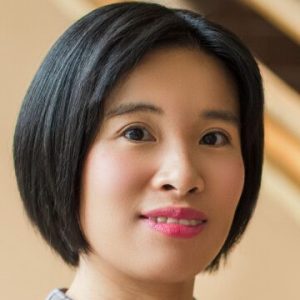
We are delighted to announce that Professor Yifei Lou has been elected as the Program Director for the SIAM (Society for Industrial and Applied Mathematics) Activity Group on Imaging Science. She will assume this role for a two-year term, beginning on January 1, 2024. For more information about this activity group, check out their website.
As a faculty member with joint affiliations in the Department of Mathematics and the School of Data Science and Society, Professor Lou has been committed to fostering collaboration and synergy between applied mathematics, data science, and industry. Her dedication and leadership will undoubtedly contribute to the advancement of the shared goals within the SIAM Activity Group on Imaging Science. Congratulations Yifei!
UNC-Chapel Hill Workshop in Representation Theory Resonates
UNC-Chapel Hill Workshop in Representation Theory Resonates
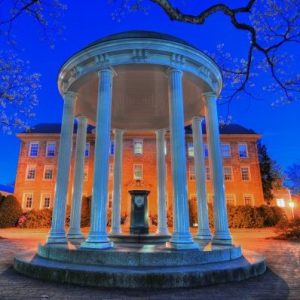
From November 17-19, 2023, Jiuzu Hong and Prakash Belkale organized a highly successful workshop at UNC-Chapel Hill in Geometric Representation Theory and Moduli Spaces. The gathering was made possible through the support of NSF Conference Grant DMS-2328483 and showcased recent groundbreaking advances in the field, drawing the enthusiastic participation of numerous young scholars. The event featured 11 distinguished speakers and over 30 other participants, including esteemed faculty and students from our institution.
Special thanks are extended to Tabs Faulkner, Stan Tsirulnikov, and Laurie Straube for their invaluable contributions to the organizing effort. Jiuzu and Prakash are also grateful to graduate students Tiger Cheng, Han Li, and Joe Compton for their dedicated assistance. Great job everyone!
For more details on the workshop, please visit the workshop website.
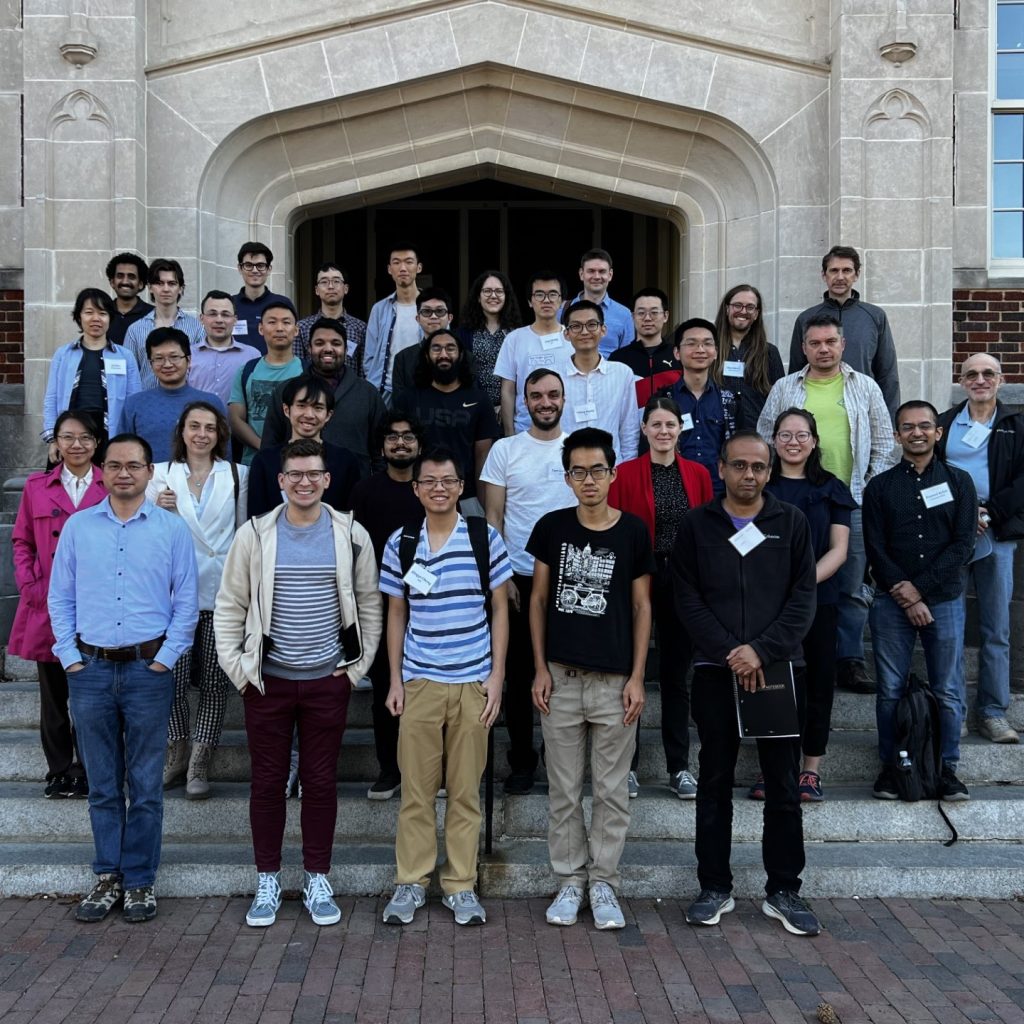
TriCAMS Triumphs: UNC Mathematics Excels in Poster Competitions
TriCAMS Triumphs: UNC Mathematics Excels in Poster Competitions
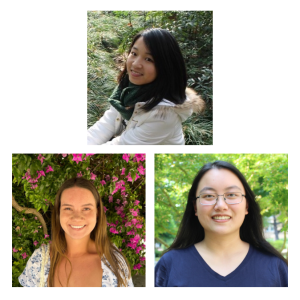
We are delighted to announce the outstanding achievements of three members within the Mathematics community who received prizes in the poster competitions at this year’s Triangle Computational and Applied Mathematics Symposium (TriCAMS):
- Shiying Li:
- Prize: Postdoc Poster Prize
- Advisor: Caroline Moosmueller
- Presentation Title: “Measure Transfer via Stochastic Slicing and Matching”
- Alexandra Whiteside:
- Prize: Undergraduate Poster Prize
- Advisor: Karin Leiderman
- Presentation Title: “Mathematical Model of the Intrinsic Pathway”
- Leyi Zhang:
- Prize: Graduate Poster Prize
- Advisor: Greg Forest
- Presentation Title: “SARS-CoV-2 Nasal Infection Sensitivity Analysis”
TriCAMS serves as an annual gathering, uniting applied mathematics researchers from the Research Triangle, fostering discovery, integration, networking, and collaboration toward shared goals in applied and computational mathematics.
Congratulations everyone!
Phi Beta Kappa Initiates Exceptional Mathematics Scholars
Phi Beta Kappa Initiates Exceptional Mathematics Scholars
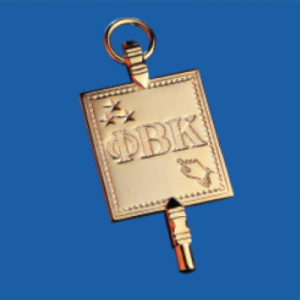
We are very proud to announce that the following 14 mathematics majors and/or double majors were initiated on October 30, 2023 into the Alpha of North Carolina Chapter of Phi Beta Kappa, the nation’s oldest and most honored college honorary society:
- Aryaman Bana
- Nicholas Chay Carter
- Madeline Kate Ellis
- Ryan Wade Helms
- Andrew James Hoffman
- Leah Mackenzie Howell
- David William Karash
- Ava Klissouras
- Marvin Burke Koonce IV
- Anna Elizabeth Lassiter
- Yi Niu
- Pratyush Seshadri
- Hanji Sun
- Kaibo Tang
Phi Beta Kappa was established by five students at the College of William & Mary during the American Revolution, driven by their shared motto, “Love of Learning is the Guide to Life.” In the midst of war, this began as a secret debating society, but over the next two centuries, it evolved into a vital institution. Phi Beta Kappa persists in celebrating individuals who demonstrate excellence through a comprehensive exploration of the arts and sciences during their undergraduate years. Its distinguished membership includes 17 U.S. Presidents, 38 U.S. Supreme Court Justices, and over 130 Nobel Laureates.
Congratulations everyone!
Emma Crawford and Kirsten Giesbrecht Shine in the 2023 UNC-CH 3MT Competition!
Emma Crawford and Kirsten Giesbrecht Shine in the 2023 UNC-CH 3MT Competition!
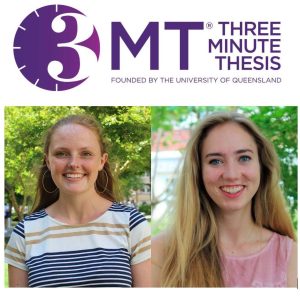
Emma Crawford and Kirsten Giesbrecht, our exceptional graduate students, delivered an outstanding performance in the 2023 UNC-CH Three Minute Thesis (3MT) Competition! In just three minutes, they skillfully conveyed the depth and significance of their research projects to a non-specialist audience during the Finals held on October 25, as part of Research Week.
Kirsten clinched the top prize for her research talk, which centered on modeling blood flow in embryonic hearts. Her work aims to enhance our understanding of how normal physical influences differ from atypical conditions, ultimately contributing to our knowledge of congenital heart diseases. Explaining her research during the presentation, Giesbrecht stated, “As the heart undergoes changes in shape, it dynamically alters blood flow, updating the physical cues it perceives. This process continues until the heart develops into a healthy infant heart — or so we hope.” See the full announcement here. Congratulations Emma and Kirsten!

US News and World Report’s 2023 “Best Graduate Schools” UNC Mathematics ranking
US News and World Report’s 2023 “Best Graduate Schools” UNC Mathematics ranking
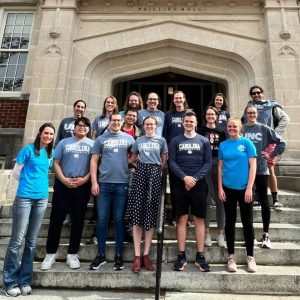
In U.S. News & World Report’s 2023 “Best Graduate Schools” list, 16 of Carolina’s programs increased their rankings. The Department of Mathematics is currently ranked 30th in the “Best Mathematics Graduate Programs”, and our Applied Math Program holds the 12th spot among the “Best Applied Math Programs”. Exciting times ahead!
Shining Stars: Professor Yaiza Canzani and Peers Recognized with 2023 Hettleman Prizes
Shining Stars: Professor Yaiza Canzani and Peers Recognized with 2023 Hettleman Prizes
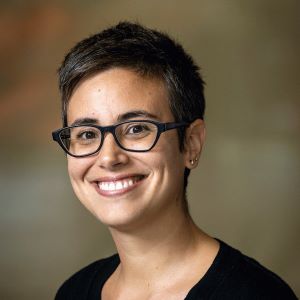
The annual Phillip and Ruth Hettleman Prizes for Artistic and Scholarly Achievement have been awarded to five promising faculty members who exemplify groundbreaking and innovative research along with future career promise. These coveted awards, established in 1986 by the late Phillip Hettleman, a proud alumnus of the Carolina class of 1921, and his wife Ruth, shine a spotlight on exceptional junior faculty members who embody a commitment to groundbreaking research and hold the promise of a brilliant future.
Among those gracing this year’s recipient list is our very own Professor Yaiza Canzani. Her work transcends boundaries, connecting microlocal analysis, partial differential equations, probability, geometry, and dynamical systems. On the national stage, her scholarship shines bright, having earned accolades including a prestigious Alfred P. Sloan Fellowship, the Sadosky Research Prize in Analysis, and a National Science Foundation CAREER grant.
The winners will illuminate their groundbreaking research during University Research Week: October 24, from 3 to 5 p.m., at the School of Social Work’s Tate-Turner-Kuralt Auditorium. The full announcement for the prize can be found here. Congratulations Yaiza!
